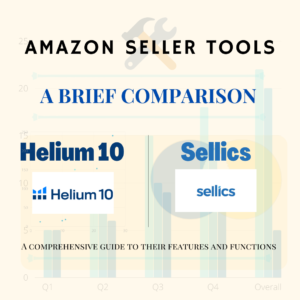7 Proven Methods for Reducing ACoS
ACoS – Amazon Advertising Cost of Sales “ACoS” is the amount of money spent on advertising on Amazon in order to generate revenue for the company. It is calculated by dividing the amount of money you spend on Amazon ads by the number of sales that those clicks brought in.
How to Lower Amazon ACOS
The key to success with Amazon ads is to bring them as near to or as low as feasible to the break-even point. Many sellers utilize advertisements to increase the number of reviews they receive or to boost their position as one of Amazon’s top sellers. It’s not simply about making a profit.
Method 1 – Pause Campaigns with higher ACoS
The fastest way to improve the account performance is just pause campaigns. What we would generally is turning off the higher of the two automatic campaigns (auto and auto low) for better result. The auto low has the lower bids naturally. So, any automatic keyword campaigns, as well as any individual keyword campaigns, should be turned off. Then we turn off all other sponsored brand ad types and any sponsored display ad types that aren’t purchaser retargeting, leaving only the exact match sponsored brand video ad on. Those two ad types generally perform at a higher ACoS, and like are the things that don’t necessarily need to be on when trying to cut spend. We recommend on leave on purchase or retargeting a little bit of video and then cut some of your sponsored product campaigns that are a little bit higher ACoS. So, that tends to be the automatic. And if you really need to cut it, your research sort of phrase match, broad match campaign as well.
Method 2 – Make your top SKUs a priority
If you have a lot of variations on a product, one fast approach to optimize your Amazon ACoS is to just market the best-selling one. The extra sales generated by advertising the popular one will frequently offset a reduction in sales of less popular ones.
Method 3 – Examine the effectiveness of your existing keywords
By keywords, I don’t simply mean the keywords you’re utilizing, but also the SKUs and categories in which your PPC campaigns are running.
Every Amazon product has its own set of relevant keywords. Customers use these search terms to locate it on Amazon. Some of these terms have a significant search traffic, while others are more particular and narrower (these ones usually convert better as well).
Some keywords may appear to be relevant but aren’t (for example, “Xmas toy”). You’ll cost too much to advertise on these, and you won’t get good results.
You’ll need data to figure out whether terms are good or harmful. There is a great deal of information. Your Seller Central Bulk Download File and Search Term Report should be your primary sources of data for this improvement.
Download them for as long as you can (after any substantial modifications to your Amazon PPC campaign, of course), then sort the data by ACOS.
Method 4 – Pause keywords than overspend ad budget
You’ll need to set a pause to this right away. Even if they appear to be relevant, they aren’t going to cut it for you. Perhaps you’ll reconsider giving them another shot in the future. But for the time being, just halt them. For these keywords, the Bulk File is the finest source of information.
Method 5 – Optimize keywords slightly over break even
From break-even to >80% ACoS, these keywords have the ability to offer you sales at a low cost. To create a coefficient that you may use to discover an acceptable bid limit for these keywords, try the following method:
- For a certain keyword, divide your actual ACOS by your desired ACoS. If your current Amazon ACoS is 65% and you want it to be 25%, the formula is 65/25 = 2.6.
- After that, you divide your current bid for this keyword by the coefficient (2.6 in our example).
Assume the bid was $3.70. As a result, 3.7/2.6=1.42.
- You should make a bid of $1.42 or less. This way, you’ll keep some sales, but at a roughly at a desired ACoS.
Note: Use the bulkfile for this.
Finally, look for keywords that didn’t result in any sales (i.e., no Amazon ACOS) but did result in clicks. If a keyword received 15 or more clicks but no sales, you were either extremely unlucky or made a poor keyword choice. Whatever the cause, you can take care of it later. These keywords need to be paused for the time being.
Method 6 – Increase your focus on high-performing keywords
After you’ve dealt with the unproductive keywords, you should focus on the ones that are doing well.
Increase your bids for keywords with a high ACOS to boost sales. The coefficient we calculated earlier in this section is used for this.
Now your coefficient will be less than 1, your new bid for these keywords will be greater than you’re existing one. As a result, your ads should appear higher in search results.
Method 7 – Don’t forget about keywords with a low number of impressions
Unlike keywords with a large number of impressions but a low CTR, keywords with a low impression could still be effective if the bid was raised.
Give them bids that are as high as your best-performing ones. Give them a week or two to prove themselves. You can simply halt them if they continue to display poor impressions or click-through-rate. However, if they begin to display clicks and conversions.
Subscribe to our newsletter!
Breetly has been recognized as one of Top New York City Advertising Agencies by DesignRush





